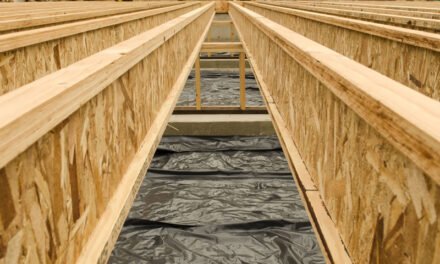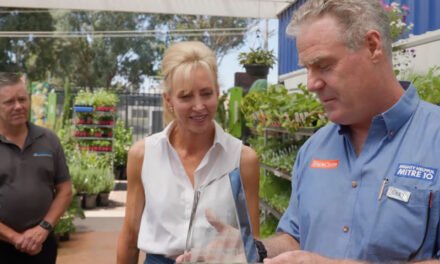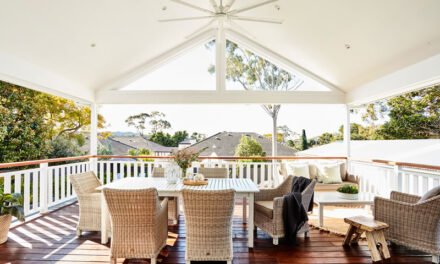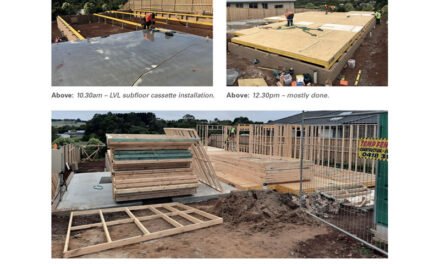Challenges in Australian Timber Production. By Phil Lindsay, Red Stag Timber
The Australian Timber Supply Summit in Melbourne last year highlighted the situation for the supply of structural timber for building over the next 25 years. There were a number of presentations showcasing the fluctuating level of expected building in the short and medium term based on economic factors, but the firm longer-term outlook was an increasing softwood timber demand as population inevitably increased.
Population growth to between 35m and 40m will increase demand by 40% to 50% which cannot be met by current Australian production. The 33% increase in the production of softwood sawn between 2005 and 2020 cannot be repeated as there are no more trees available. Worse, recent bushfires destroyed 10% of the softwood forests and the quality of the remaining trees has dropped leading to lower production levels of structural timber. The result is less structural timber is being produced than 15 years ago.


Structural timber production peaked in the mid-2000s at over 2.3m m3 p.a. before falling to under 1.8m m3 p.a. in 2020. However, demand for softwood structural timber increased in 2022 to more than 2.5m m3 p.a. with imported timber surging to more than 700,000 m3 (almost 30% of total timber demand). Timber shortages resulted in record prices for most of the year as a perfect storm of unprecedented building coincided with worldwide supply chain struggles.
Relying on imports for 30% of the timber demand drove prices to double when supply was disrupted. By 2050 more than 40% of structural timber will be imported leaving the Australian market controlled by import supply chains. Boom then bust pricing and availability doesn’t provide confidence to customers and can drive product substitution. That doesn’t help anyone.
Simplifying greatly, my takeaways from the conference were:
• Demand will increase,
• Australian production will remain static,
• So, imports will increase.


SO
WHICH PART OF THE MELBOURNE PARADIGM CAN BE CHALLENGED?
The only one is the assumption that Australian production of structural timber will be static. If domestic structural timber supply increases, it reduces the need for imports and reduces the impact of global supply chains and pricing. Without having any more logs available then the only option is to produce a higher proportion of structural timber from the limited total already being cut.
There are two main ways to achieve this: introduce a lower grade as a by-product of the current grade(s) or adjust the current grade to fit the properties of the current forests. I’ve experienced both situations in New Zealand, and I have a definite preference based on what worked and what didn’t.
The timber grades in New Zealand were revised in 2004 as sawmills moved from visual grading to mechanical grading; similar to what had happened in Australia ten years earlier. There was also the impetus of improving the building industries’ confidence in timber after a less than stellar introduction of mechanical grading by some players, but that’s another story. To keep things simple the three old visual grades were replaced with three new mechanical grades with new names. Standards bodies took the opportunity to update the design properties which hadn’t been changed since the 1980s. Light timber framing Standards were updated so that all three new grades could be used in every part of houses so the total amount of timber available to be used for structural purposes would be maximized.
What happened? Almost no one used anything but the main grade. Both the lower and higher grades had very little uptake. The higher grade was only used where the main grade required going up a size or couldn’t be used at all. The lower grade gathered dust (or the New Zealand equivalent; it sat in the sawmills’ yard and got soaked) as few customers wanted it at any price.
The outcome was that the effective supply of structural timber didn’t increase one bit as merchants didn’t want to complicate their limited yard space, the frame and truss plants didn’t want to complicate their factories, the builders didn’t want to complicate their building sites, and the much smaller market of Do-It-Yourselfers got what they were given.
It was a lost opportunity which New Zealand is paying for to this day.
About the only positive was the adjustment of the design properties of the main grade to fit with the forests available at the time. It allowed the stiffness property of the new grades to be kept the same as the older visual grades but adjusted the strength properties as these were where the forests had changed. This allowed the total amount of structural timber available to be maintained. Not great, but at least we didn’t go backwards. With the benefit of hindsight, we lacked an understanding of our customers and tried to be too smart.
We missed the opportunity to increase structural timber production, we should have kept it simple. Those are about the only conclusions I had about the opportunity to increase Australian structural timber production:
• Understand the forest resource today and tomorrow
• Understand the drivers of customers’ behavior
• Only adjust the design properties that will increase structural yields, and minimize those changes
• Keep it simple with one main grade


Postscript: Some Australian sawmillers may see New Zealand as a threat, that NZ could swamp the Australian market. Nothing could be further from the truth. New Zealand has its own challenges with timber supply over the next decade as our total harvest will drop by over 25%, and by more than 50% in some regions. The long-trumpeted New Zealand wall of wood is over, and a lack of subsequent forestry planting has left a gap in the age classes which is now starting to hit home. Not every region faces declining harvests, but some sawmills will face a hard road for the next decade.












